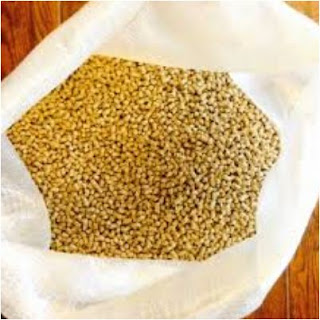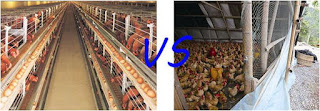Many Kind of Chicken
There are many kinds of Chicken, the different chicken can see through the combs type. The anatomy of a chicken is rather similar. There are eight distinctive types of combs on chickens and roosters: rose, strawberry, silkiest, single, cushion, buttercup, pea, and V-shaped.
The
Rose is a solid, broad and nearly flat comb on top. It is a low, fleshly comb that concludes in a well-developed tapering spike at the back. It may turn upward as in Hamburg breeds, be nearly horizontal as in Rose Comb Leghorn breeds, or follow the contour of the head as in Wyandotte breeds. The top surface of the main part should be slightly convex and studded with small rounded protuberances. The general shape varies in the different breeds.
The
Strawberry is a low comb that is set well-forward. The shape and surface resemble the outer part of half a strawberry with a large end nearest the beak of the chicken. The Strawberry is a low comb that is set well-forward. The shape and surface resemble the outer part of half a strawberry with a large end nearest the beak of the chicken.
The
Silkiest is an almost round, somewhat lumpy comb, inclined to be greater in width than length; covered with small corrugations on top and crossed with a narrow transverse indentation slightly to the front of the comb. Sometimes two or three small rear points are hidden by a crest, others are without points. Generally they are considered to be genetically a rose comb changed by a rose comb.
The
Single comb is a moderately thin, fleshy formation of smooth soft surface texture, firmly attached from the beak along the top of the skull with a strong base. The top portion shows five or six rather deep serrations or distinct points, the middle points being higher than the back or front, forming a semi-oval shape when viewed from the side. The comb is always upright and much larger and thicker in males than in females. It may be lopped or upright in the female. This depends on the breed. The comb is divided into three sections: the front, the middle and that extending past the rear base of the skull, the posterior or blade.
The
Cushion is a solid low, moderately small comb; smooth on top, the front, rear and sides are nearly straight with rounded corners. It has no spikes.
The Buttercup consists of a single leader from base of beak to a cup-shaped crown set firmly on the centre of the skull and completely surmounted by a circle of regular points. The cavity within the circle of points is deep, the texture of the comb is fine.
The
Pea is a medium length, low comb, the top of which is marked with three low lengthwise ridges, the centre one is slightly higher that the outer ones. The outer ones are either undulated or marked with small rounded serrations. This is a breed characteristic that is found in Brahmas, Buckeyes, Cornish, Cubalayas and Sumatras.
The V-Shaped comb is formed of two well defined horn like sections that are joined at their base, as in breeds such as Houdans, Polish, Crevecoeurs, LeFleche and Sultans.
Both the
male and female have distinctive wattles, a fleshy piece of hanging skin under their beak and combs. These organs help to cool the bird by redirecting blood-flow to the skin. In males, the combs are often more prominent, though this is not the case in all varieties.
The largest chicken egg on record weighed over 12 ounces and measured 14 inches round.
The heaviest chicken is 22 lbs. (10 kg approx.) and belonged to Grant Sullens of West Point, California, USA. This breed of chicken is a' White Sully'. It is known to have a very mean temper as it has been reported to have killed two cats and wounded a dog.
Labels: Chicken Type

















